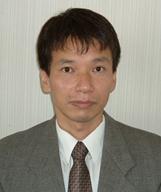
Electronics, Communications and Networks


Biography: Koichi Takiguchi was born in Ibaraki, Japan. He received the B.S. degree in electronic engineering, and M.S. and Ph.D. degrees in electrical engineering, all from the University of Tokyo, Tokyo, Japan, in 1987, 1989, and 1992, respectively. His graduation thesis and dissertation were in a GaAs/AlGaAs distributed feedback (DFB) semiconductor laser and a resonator-type fiber-optic gyroscope (RFOG), respectively.
He joined NTT Laboratories in 1992, where he engaged in the research and development of integrated-optic (silica waveguide technology-based) functional devices including the first tunable optical chromatic dispersion compensator and optical OFDM demultiplexer. From 1998 to 1999, he stayed at University of California at Santa Barbara (UCSB), USA, as a visiting scholar, where he engaged in semiconductor-based photonic functional devices.
In 2012, he joined Department of Electrical and Electronic Engineering, Ritsumeikan University, Japan, as a professor. He is now interested in optical signal processing technology and their applications to next generation optical and THz-wireless communication, and optical and THz-wave sensing systems.
Dr. Takiguchi is a member of IEEE, OSA, the Institute of Electronics, Information, and Communication Engineers (IEICE) of Japan, and the Japan Society of Applied Physics (JSAP). He serves on an associate editor of IEEE Photonics Technology Letters (PTL).
Speech Title: Integrated-optic Tunable Chromatic Dispersion Compensators
Abstract: Although digital coherent optical transmission is being vigorously pursued, optical signal processing technology is important in order to realize future high-speed and low-power-consumption all-optical networks. A tunable optical dispersion compensator (TODC) is one of significant signal processing devices, which trims the varying dispersion. The TODC is also important for future high-speed optical access networks as they require low-power-consumption and low-cost devices. An integrated-optic lattice-form TODC, which consists of cascaded Mach-Zehnder interferometers and has a 2 x 2 input-output configuration, is one of candidates for use in the optical networks because it has merits including a small footprint, good stability, and a high-speed response using thermo-optic effect.
In this talk, I explain the configuration, operating principle, some obtained results, and application areas of the lattice-form TODC.